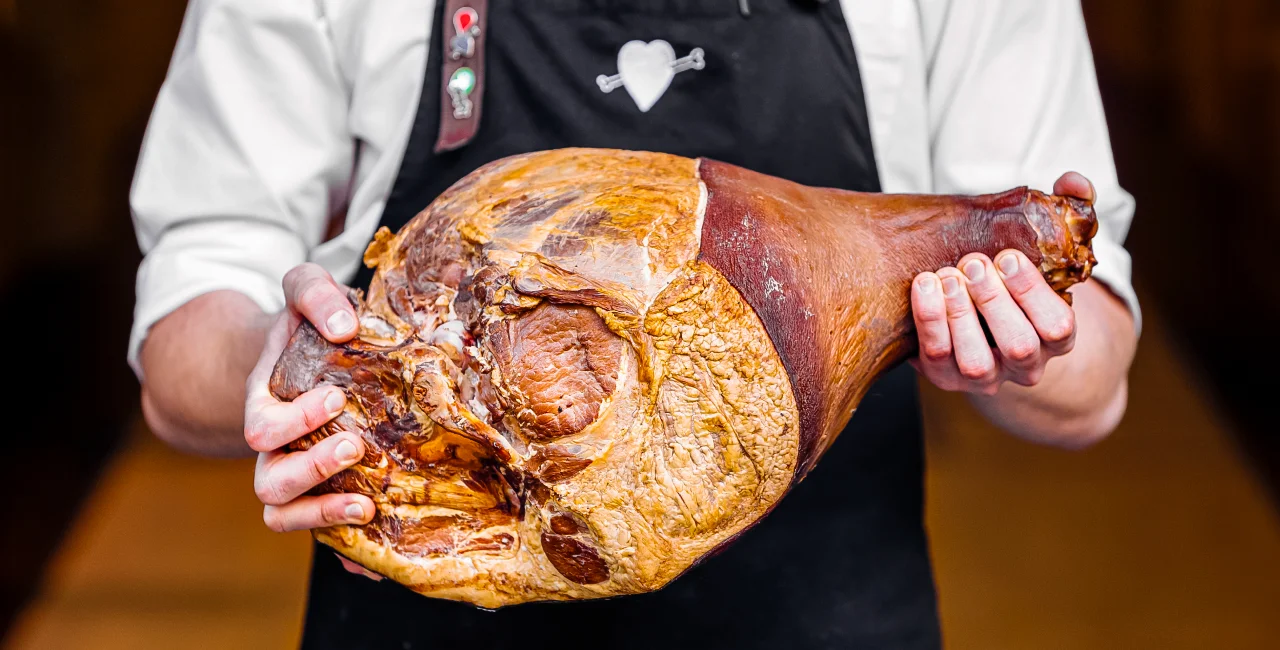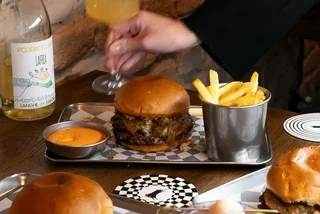The history of Prague Ham (Pražská šunka) dates back to 1857, when butcher and smoker František Zvěřina brined, smoked, and then cooked a whole bone-in pork leg. Although Zvěřina is the spiritual father of Prague Ham, the pork butcher Antonín Chmel, who boasted a large factory in Vinohrady, versus Zvěřina’s tiny Celetná Street shop, made this delicacy genuinely famous.
Chmel was pronounced in the same breath as Prague Ham because his descendants continued the production. Austrian journalist and author Egon Erwin Kisch famously wrote in a newspaper column about the ham’s production that whoever does not have "bacteria of the genus Chmel" can never produce quality Prague Ham.
Prague Ham was highly sought-after in the 1920s and 1930s, and its popularity led to other cultures trying to replicate the recipe. In fact, it was so famous that even American President Franklin Roosevelt enjoyed it when the automobile adventurer Břetislav Jan Procházka gifted him some. According to writer Lukáš Berný, other well-known personalities, such as comedian Charlie Chaplin, German Chancellor Otto von Bismarck, and U.S. Olympic champion and short-distance sprinter Jesse Owens, also sampled and enjoyed Prague Ham.

Sadly, World War II cut short the glory of the Chmel plant. After the war, the sizeable Czechoslovak meat processing plants continued to produce Prague Ham, but the quality was nowhere near the level of the First Republic. Better times for Prague Ham came after 1989, after the Velvet Revolution when butchers began to return to the traditional recipe.
It is now registered as a Traditional Speciality Guaranteed in the European Union and the UK. This means that it can only be produced according to a specific procedure.
A secret ingredient locks in a distinct flavor
The recipe is simple: meat, salt, and time. The ham hock is salted, injected with water and butcher’s salt, and brined for three to four weeks. During this time, the ham is flipped and fresh suet added. It is then rinsed with warm water, lightly smoked with beechwood, and cooked for at least six hours, depending on its size. Butcher František Kšána of Naše Maso in Prague explains that the distinct flavor of Prague Ham comes from the brining process, which uses Praganda, a special Czech salting and pickling mixture that combines 99.5 percent table salt and 0.5 percent sodium nitrite to create micro-organisms responsible for the ham's flavor.

Where to try and buy authentic Prague ham
If you order Prague Ham from the butcher, you shouldn't expect to get a whole slice like in the supermarket or a ham with a garish red color. A proper Prague ham will reveal marbling with fat on the cut. "Until a few years ago, this was considered a defect, and modern customers were not used to it. Today, on the contrary, you should look for such ham; it is a sign of handmade work," says Kšána. The tradition of Prague Ham lives on through Amaso, which sells its ham at the Naše Maso butcher shop, cooked as it was by butchers in Prague during the First Republic like Zvěřina, who made a smaller ham with a milder flavor.
In the Czech Kitchen is a weekly column written in cooperation with Ambiente's culinary experts. Established in 1995, the Prague-based collective of pubs, restaurants, and fine-dining outlets has transformed the Czech culinary landscape and led to widespread awareness of quality food service and production in Czechia. Follow their socials or book your table at www.ambi.cz.












 Reading time: 3 minutes
Reading time: 3 minutes 



















